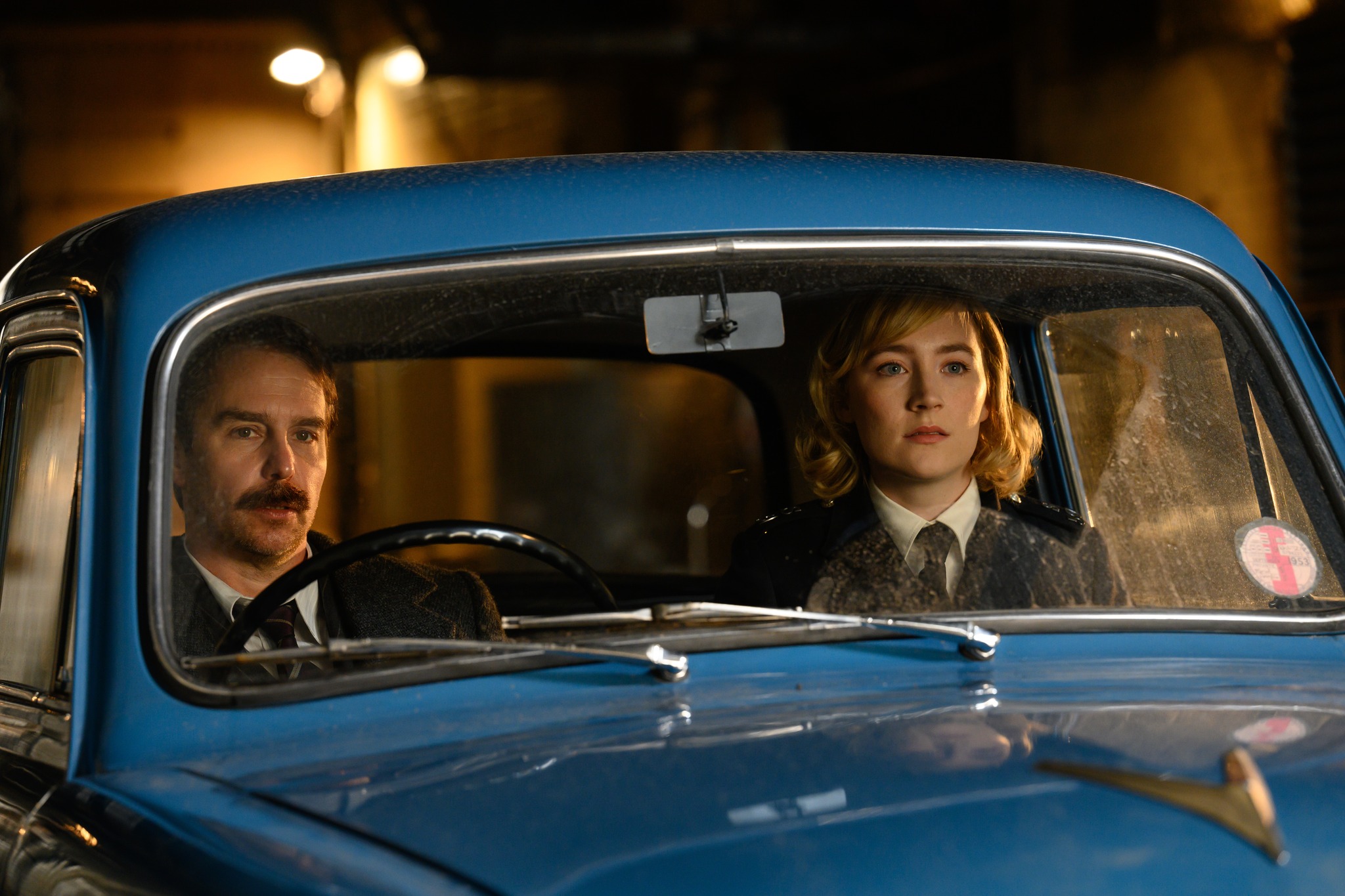
Film Editor Emily Wallace praises See How They Run for being an enjoyable whodunnit, with a fun central pairing in Ronan and Rockwell
The whodunnit mystery seems to be having a moment in the spotlight in recent years, from Knives Out and its upcoming sequel Glass Onion and Kenneth Branagh’s recent adaptations of Agatha Christie’s Poirot novels, to TV shows such as Only Murders in the Building. One might think that, with the overabundance of media in this genre at the moment, they might start becoming unoriginal and predictable. As the ill-fated film director Leo Kopernick (Adrien Brody) states within See How They Run, ‘if you’ve seen one, you’ve seen them all’. Fortunately, See How They Run for the most part avoids these issues, creating an engaging murder mystery that feels like an original and fresh take on the genre.
Rockwell and Ronan complement each other brilliantly
See How They Run sets itself in the 1950s West End, centring around a performance of Agatha Christie’s The Mousetrap, a highly successful whodunnit play that is still running to this day, although it has never been filmed due to an unusual clause preventing an adaptation while it is still on stage (which may or may not be an important plot point). After Kopernick, who was planning to direct a flashy Hollywood adaptation of the play, is found murdered backstage, the theatre becomes a crime scene as the disgruntled Inspector Stoppard (Sam Rockwell) and eager Constable Stalker (Saoirse Ronan) are brought in to investigate. Rockwell and Ronan complement each other brilliantly, both for many humorous exchanges between the unlikely duo, as well as more touching moments as their working relationship develops. Though the mystery is the central plot of the film, Stoppard and Stalker are the heart of it.

As in most whodunnits, much of the film revolves around interviews of the suspects. In See How They Run, we meet a range of real-life figures involved with The Mousetrap, such as an entertaining young Richard Attenborough (Harris Dickinson), Sheila Sim (Pearl Chanda) and Hollywood producer John Woolf (Reece Shearsmith), alongside those invented for the film like screenwriter Mervyn Cocker-Norris (David Oyelowo). This array of supporting characters brings another layer of humour to the film, particularly through flashback scenes that show their interactions with the rather unpleasant victim before his untimely demise.
See How They Run manages to carefully walk the line between parodying the whodunnit and being a tribute to the genre
See How They Run manages to carefully walk the line between parodying the whodunnit and being a tribute to the genre. The theatrical setting and numerous references to Agatha Christie, widely regarded as the most famous crime author, allows See How They Run to act on a very meta level. It is a whodunnit that is painstakingly aware that it is a whodunnit; it pokes fun at the typical tropes of the murder mystery while also repeating them. It is very clearly made with a fondness for these stories while managing to avoid falling into the trap of taking itself too seriously. Although the resolution of the film had crossed my mind (which is always very gratifying), it did not feel too predictable, and the mystery kept me hooked until the final reveal.
Though the film has a slightly slower first half, it would be hard to tell that this is director Tom George’s feature film debut. The muted post-war London is brought to life across the film, and the action-packed second half makes up for the slower paced start. Both the styling and the quick wit make See How They Run feel very reminiscent of a Wes Anderson feature, particularly with the presence of frequent Anderson collaborators Brody and Ronan, however, George manages to maintain an original touch.
Verdict:
See How They Run is an enjoyable whodunnit that manages to stand its ground within the vast amount of murder mystery media that has been released in the past few years. With plenty of laughs and a complicated but engaging plot, See How They Run is worth a watch whether you’re a crime aficionado or if this is your first murder mystery.
Rating: 8/10
See How They Run is now in cinemas.
For more recent cinematic releases, check out these other articles from Redbrick film:
Comments